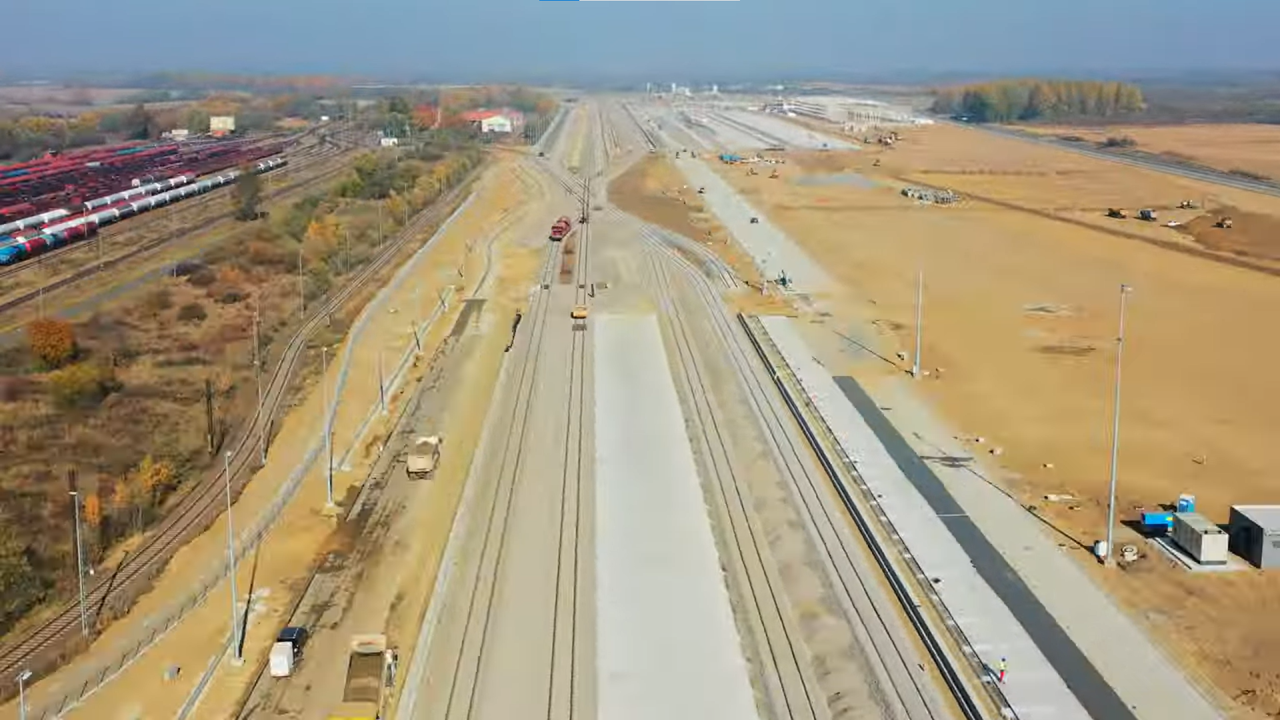 The Association of Hungarian Logistic Service Centres (MLSZKSZ) has announced that it will be developed Szeged intermodal terminal located on the area of the former RO-LA transshipment area in Kiskundorozsma, east of the city.
The Association of Hungarian Logistic Service Centres (MLSZKSZ) has announced that it will be developed Szeged intermodal terminal located on the area of the former RO-LA transshipment area in Kiskundorozsma, east of the city.
The PSP Terminal, situated at the border between Hungary and Serbia, is being built by Petrolsped Szállitmányozasi Kft and will be able to transfer 60,000 semi-trailers to railway transport significantly reducing the road traffic on the north-south axis (M5) and west-south (M1) and thus reducing the CO2 emissions.
HUF 200 million (EUR 526,200) is the value of the project entirely financed by Petrolsped Szállitmányozasi and it is expected that in September will enter operation.
“More than 1 million Turkish, Bulgarian, Romanian and Serbian trucks travel on the M5 motorway in the Szeged area every year. The terminal in Kiskundorozsma, close to the border with Romania and Serbia with access to the M5 and M43 highways, is the best location for transferring part of this transit truck traffic to the train,” Attila Kovács, the managing director of PSP Terminal Kft said.
The terminal is created on a 4.8-hectare area and will have a capacity to handle 120 semi-trailers and the same number of TEU containers at the same time. The terminal is able to serve three 650-metre pair trains travelling in each direction. The train consists of 19 cars which can transport 38 semi-trailers or 38 40-foot containers per train. With this capacity, the terminal can reduce road traffic on the M5/M1 highways by around 60,000 trucks annually.
The operation of the facility is supported by a self-developed terminal operating system, which will be able to transfer craneable and non-craneable semi-trailers and transfer the containers onto railways. The loading track is electrified and will be served by electric locomotives which will also reduce CO2 emissions.
The intermodal terminal built between Western Europe and the Balkans will operate regular trains based on customer requests and will provide connections to railway terminals and seaports located at a distance of 1,200-1,400 km. The new terminal will provide direct connections to Bettembourg, in southern Luxembourg, and Poznań railway junctions, and to France, Spain, Italy, Great Britain or to the Baltic States.
Szeged intermodal terminal, which will be suitable for loading semi-trailers and containers transfer to railways will connect Western and Central European facilities via Szeged, and will encourage sustainable mobility including on the connections between Serbia, Romania, Bulgaria, Greece and Turkey.
The Hungarian intermodal traffic has been growing slowly but steadily in recent years, and at the same time, more than 90% of all domestic intermodal traffic is handled by three terminals in Budapest operating at full capacity. “Currently, intermodal terminals operate only on the east-west corridor in Hungary, but the Budapest transshipments handling south-north traffic and the Curtici terminal on the Hungarian-Romanian border is full,” Fülöp Zsolt, the president of MLSZKSZ said.
Budapest’s intermodal traffic is burdening the highways instead of shifting the goods to the railway near the border points. “That’s why we need a terminal with which the goods coming from Serbia by truck can be loaded onto the railway and reach North, Central and Western Europe,” Fülöp Zsolt added.
Share on:



